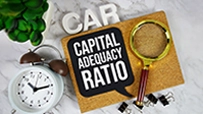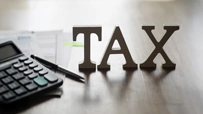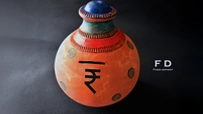How Recurring Deposits Help You Build a Savings Habit
Disclaimer: This blog is generic in nature. Ujjivan SFB is not responsible for the accuracy of information provided herein.
August 01, 2025

Saving money sounds easy, until you try to do it every month. Life keeps throwing expenses at you, and before you know it, the idea of saving becomes a “next month” plan.
But what if saving didn’t feel like a chore? What if it was just a part of your monthly routine, like paying your phone bill or recharging your DTH?
That’s exactly what a Recurring Deposit (RD) can help with. It’s not about building a huge bank balance overnight. It’s about starting somewhere and sticking to it. Over time, those small amounts start adding up, and more importantly, you begin to see yourself as someone who saves.
In this blog, we’ll explore how RDs help turn intention into habit, why they’re useful even if you earn a modest income, and how to choose one that fits your goals.
What Are Recurring Deposits and How They Differ from Fixed Deposits?
A Recurring Deposit (RD) is a simple savings tool offered by most banks. It works on a monthly contribution model. You decide on a fixed amount to set aside each month for a specific period, like 6 months, 1 year, or 5 years. Point to Note: RD tenure ranges from 6 months to 10 years.
That amount is deducted from your account and added to your RD, every month. At maturity, you get back the total savings plus interest. The recurring deposit interest rates are fixed at the time of booking, so you know what to expect.
Unlike a Fixed Deposit (FD), which requires a lump sum upfront, RDs let you build savings gradually. This makes them ideal for salaried individuals, students, or anyone starting small.
Both FDs and RDs offer guaranteed returns, but RDs are more flexible for those who prefer steady progress over one-time investments.
Why Recurring Deposits Foster a Savings Habit
One of the hardest parts of saving is discipline. Most people want to save, but they don’t have a system that makes it stick.
That’s where recurring deposits shine. RD brings structure into your money habits. Since you’re committing to a fixed monthly deposit, you begin to treat saving like a regular responsibility. Over time, this routine becomes second nature.
What also helps is the automation. The RD amount is automatically debited from your savings account every month. Just link your savings account with RD and set up auto-debit. This removes hesitation and turns saving into something that “just happens” quietly in the background.
With every deposit, you're building your savings and a mindset. And that’s far more powerful than any short-term return.
What Makes Recurring Deposits a Smart Choice
Recurring Deposits don’t promise high returns—but they offer something just as valuable: consistency with zero risk. Here’s why they work for so many people:
In a way, RDs combine the best of both worlds. The simplicity of a savings account and the discipline of a loan repayment—only this time, you're paying yourself.
How RD Interest is Calculated
Understanding how to grow your savings in a Recurring Deposit can help you plan better. Since you're investing money monthly, each instalment earns interest from the time it’s made till the end of the tenure.
Banks usually calculate interest using quarterly compounding. This means every three months; your interest earns more interest.
Most banks apply fixed Recurring Deposit Interest Rates, giving you predictable returns. Once you lock in the rate, it remains unchanged throughout your RD’s duration.
RDs follow a cumulative interest structure—interest is added up and paid at maturity. It’s simple, safe, and works well for people who don’t want market-linked risks.
Before opening an RD, always check the current Recurring Deposit Interest Rates to make the most of your savings.
RD Calculator: Estimate How Much You’ll Save
It’s one thing to know that Recurring Deposits build savings—it’s another to see exactly how much you’ll have at the end. That’s where an RD Calculator comes in handy.
With just a few inputs—like how much you plan to deposit each month, for how long, and the interest rate—you can get a quick estimate of your maturity amount. It’s a great way to plan with intention and stay motivated.
You can find a reliable and easy-to-use RD calculator here: Ujjivan Small Finance Bank RD Calculator
Try different combinations to see how even a small increase in your monthly deposit or tenure can significantly boost your returns—without any risk.
Final Thoughts
Big financial milestones often start with small, steady steps—and a Recurring Deposit is one of the most beginner-friendly steps you can take.
You don’t need to wait until you’ve “saved enough” to begin. That thinking delays progress. With an RD, even ₹500 a month can set the foundation for better money habits and a stronger sense of control over your finances.
The real value lies not just in the money you save, but in the behaviour you build. And the fixed Recurring Deposit Interest Rates ensure that your efforts pay off with predictable, safe returns.
If you’ve been meaning to start saving but didn’t know how or where to begin, an RD might just be your easiest entry point. Start small. Stick to it. Let the habit grow.
And don’t forget: always check the latest Recurring Deposit Interest Rates before locking in your deposit, so you get the most from your savings journey.
Disclaimer:
The contents herein are only for informational purposes and generic in nature. The content does not amount to an offer, invitation or solicitation of any kind to buy or sell, and are not intended to create any legal rights or obligations. This information is subject to updation, completion, amendment and verification without notice. The contents herein are also subject to other product-specific terms and conditions, as well as any applicable third-party terms and conditions, for which Ujjivan Small Finance Bank assumes no responsibility or liability.
Nothing contained herein is intended to constitute financial, investment, legal, tax, or any other professional advice or opinion. Please obtain professional advice before making investment or any other decisions. Any investment decisions that may be made by the you shall be at your own sole discretion, independent analysis and evaluation of the risks involved. The use of any information set out in this document is entirely at the user’s own risk. Ujjivan Small Finance Bank Limited makes no representation or warranty, express or implied, as to the accuracy and completeness for any information herein. The Bank disclaims any and all liability for any loss or damage (direct, indirect, consequential, or otherwise) incurred by you due to use of or due to investment, product application decisions made by you on the basis of the contents herein. While the information is prepared in good faith from sources deemed reliable (including public sources), the Bank disclaims any liability with respect to accuracy of information or any error or omission or any loss or damage incurred by anyone in reliance on the contents herein, in any manner whatsoever.
To know more about Ujjivan Small Finance Bank Products Visit:"https://www.ujjivansfb.in"
All intellectual property rights, including copyrights, trademarks, and other proprietary rights, pertaining to the content and materials displayed herein, belong
to Ujjivan Small Finance Bank Limited or its licensors. Unauthorised use or misuse of any intellectual property, or other content displayed herein is strictly prohibited and the same is not intended for distribution to, or use by, any person in any jurisdiction where such distribution or use would (by reason of that person’s nationality, residence or otherwise) be contrary to law or registration or would subject Ujjivan Small Finance Bank Limited or its affiliates to any licensing or registration requirements.
FAQs
1. What is the minimum amount needed to start a Recurring Deposit?
Most banks let you begin with as little as ₹100 per month.
2. Can I withdraw my RD before the end of the term?
Yes, most banks allow premature closure after 3 months, though you may earn lower interest than initially promised.
3. Can I open more than one RD at the same time?
Absolutely. Many people run multiple RDs for different financial goals like school fees, gadgets, or holiday planning.
Latest Blogs

Banking Safety Guide: How to Avoid QR Code Frauds While Making Payments
India’s love for QR code payments has made transactions lightning-fast, but also opened a new front for cybercriminals.

Scam Alert! Phishing, Vishing, and Smishing Can Drain Out Your Finances
Digital banking in India has transformed the way we manage money.

India’s New GST Reform Bill: What GST 2.0 Means for You
India’s indirect tax system is entering a landmark new phase.

Capital Adequacy Ratio (CAR): Meaning, Formula, and RBI Norms
Banks run on trust — but trust alone cannot guarantee stability. A sudden surge in bad loans or a market shock can quickly weaken even the largest institutions.

ITR Filing Penalties: What You’ll Pay in Fees, Interest, and Compliance Costs
The Income Tax Department extended the ITR filing deadline for FY 2024–25 to September 15, 2025, giving taxpayers a second chance after the original due date lapsed.





